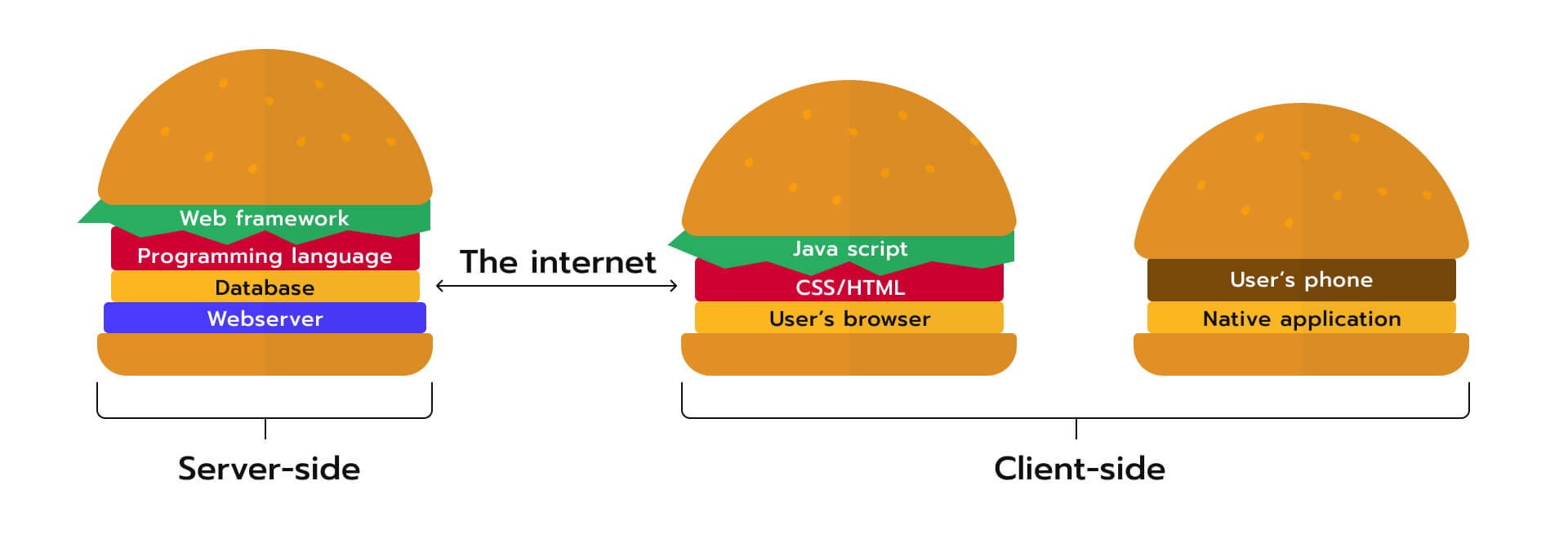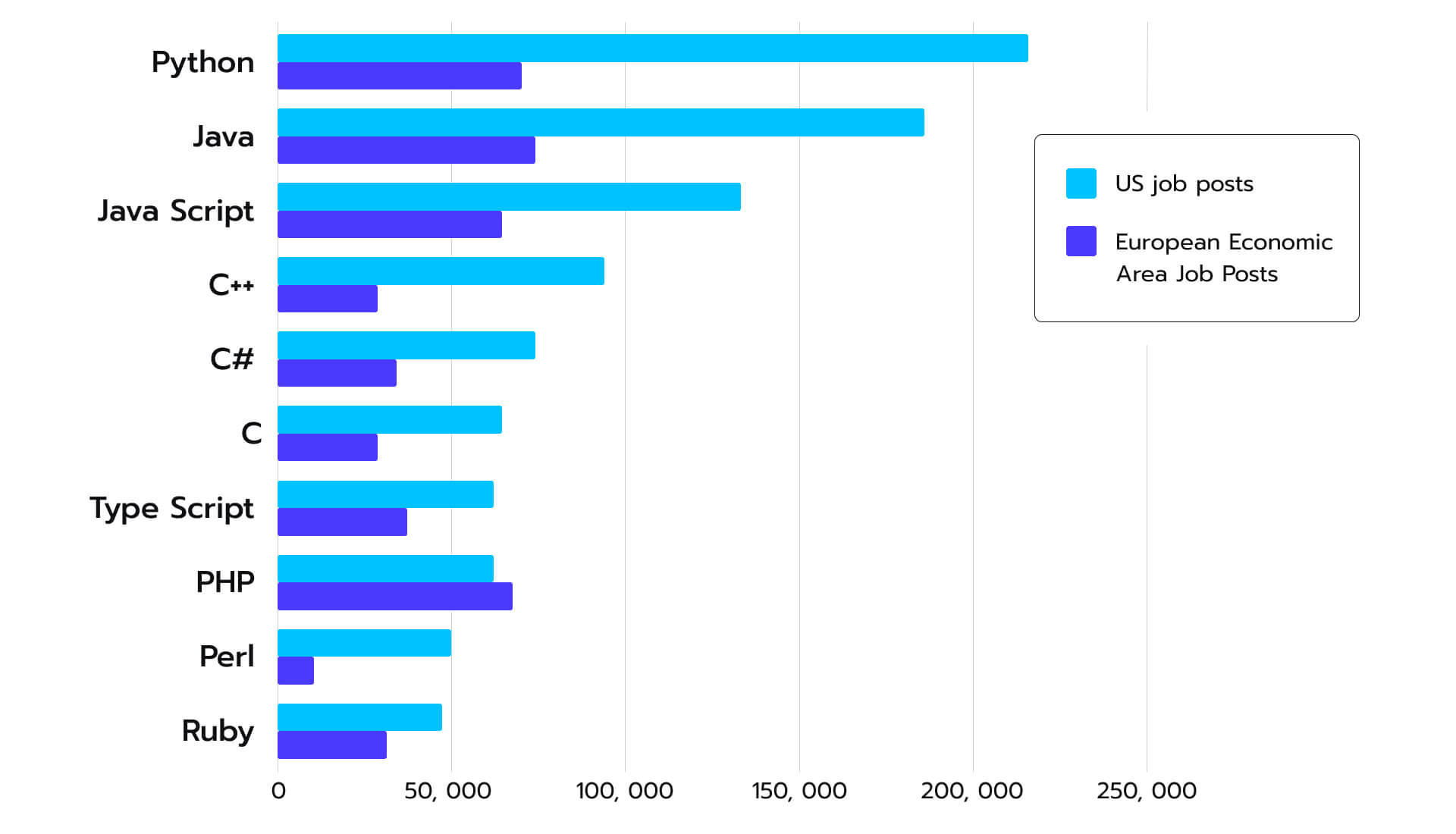Viva Connections: a centralized hub for communication
Create a curated workplace experience that simplifies a digital workplace. Viva Connections is a centralized solution within the Microsoft 365 ecosystem.

Tech stacks can be easy-to-understand when you get to know them closely.
Yahoo reports that the global software products market will reach $2.157 trillion by 2026. It is a significant jump from the current $1.307 trillion. Yet, the tech stack starts a crucial part of understanding here – there is a particular tech stack behind each software product on the market.
There is a popular belief that a technology or tech stack can make or break it when building your software product. Before even a single line of code gets written, you must carefully select a technology infrastructure tech stack that will determine your product’s success.
With a wide selection of popular tech- stacks in the development world today, choosing one that works the best for your project might seem daunting. But it doesn’t have to. Only a few aspects are worth factoring in when caught in a technology stack dilemma.

The technology stack combines programming languages, frameworks backend technologies, and tools developers use to build a web or mobile app. The two main components of the modern tech stack for any app are client-side (front-end) and server-side (back-end). Each application layer is built atop the one below, thus creating a stack.
These are everything users see on their screens and where the interaction happens. The three main sets of technologies used in the various frontend development are:
These are not visible to a user. But its programming languages power the user side and create the logic of websites and web applications. Frameworks for programming languages are time savers. They provide vetted implementations of typical features of operating systems (data access, user authentication, etc.).
The only challenge is in choosing server-side technologies.
Choosing a technology stack that will work the best for your project might seem like a real challenge, especially if you are a non-technical founder. The easiest way out would be to rely on your personal preferences or previous experience.
However, personal preferences are subjective and can lead to wrong decisions. You can only count on it if you have a strong background in web or mobile application development. Trusting your competitor’s experience or going online to find various opinions and arguments isn’t a wise choice. In reality, there are a couple of aspects to be taken into account.
Sometimes the type of product you are building determines your tech stack consists of. Depending on the scope of your project, it makes sense to have a solutions stack and settle for a particular technology.
If you are launching a startup or want to build a quick MVP, Ruby is your match. However, lately, Node.JS have come into play, and it seems it might take over sooner than we thought. Both can get you in development by 30% quicker than anyone else. Rapid growth is achieved thanks to the expressive and concise nature of the language and its flexible syntax, as well as analytics tools such as dozens of open-source libraries.
With libraries like Pandas, SciPy, and NumPy, Python works perfectly for projects connected with Big Data, Machine Learning. It is a universal language when you need to calculate vast volumes of data. Python is capable of doing it quickly and sufficiently. You can use Python for any web application or project, but academic and scientific programming are preferred.
Java is a general-use programming language that is a universal solution for ongoing, big projects. It can do virtually anything with a decent amount of efficiency. Java offers a user interface, numerous tools, web frameworks, and libraries, making it easy for developers to design and implement any desired feature. It is also a choice of 90% Fortune 500 companies.
But when it comes to choosing a tech stack based on the set of technologies project type, it is mostly a matter of how big it is. If the tech stacks of the project are big, you need more competent human resources and a community to have your back.
Deciding upon a niche web stack or new technology can make recruiting full-stack developers a nightmare. Utilizing a dedicated full stack developer can significantly simplify this process, ensuring that all aspects of front-end and back-end development are seamlessly integrated and efficiently handled. Before making a final decision, consider if you can find another developer familiar with this technology stack. If the skills are easily transferable, there will be no problem training a junior developer in the desired technology.
Some reports suggest that the demand for enterprise mobile apps is about to outstrip the available development capacity by 500%. In this respect, Java is a sensible choice, for it is widely popular. Given a multi-million community of engineers, finding a professional should be easy.
However, it is also one of the most in-demand programming languages in 2023. Another widespread choice – Python, being popular in academic and scientific circles, created a large, well-educated talent pool and currently holds the olive branch among programming languages (see Fig. 1) Figure 1. Most in-demand programming languages of 2022
Figure 1. Most in-demand programming languages of 2022
What shouldn’t be taken into account when looking for resources is cost. It is a popular misconception that when choosing between technology and different, popular tech stacks and stacks, the cost of a developer is detrimental. In reality, you have as many chances of finding an expensive Ruby developer as you can find a cheap one.
The ecosystem is a community and tools around technology. When choosing a technology stack that suits your project, it’s essential to check out whether there is enough community around the technology and sufficient information. Whether you stumble upon a problem or an issue, you will be able to find enough information and a solution.
For instance, every big city worldwide has a Ruby community that runs regular meetups. It is also one of the most popular coding languages used on Github, a social coding site. Sometimes even a closed ecosystem operating system like .Net has a massive knowledge base via MSDN StackOverflow and numerous forums and blogs.
Another critical factor is the maturity of the technology. The earlier in its lifecycle, the less reliable the technology is. After several years of iterations, Ruby is considered a reliable and low-risk technology. But it’s not only about the lifespan. Mature technologies have more tools to simplify developer life (like continuous integrations and bug tracking).
However, they only exist for more popular tech stacks or for technology stacks where there is a market of developers. A large amount of these tools suggests how safe a technology is. The logic behind the importance of maturity is pretty simple. The more mature a language is, the bigger the community and its resources.
Now that we’ve covered aspects to consider, whether a wrong choice of technology stack can ruin all the technology services a project remains, the answer is – no, it can’t. The reason projects fail is not a technology stack or a language, and the cause is the wrong architecture solutions. Whichever language you choose, it doesn’t mean you are stuck with it for good. Yes, there are some limitations. For instance, .Net is limited to Microsoft Stack. But it won’t be why your product failed. You can always start a project in one language, say Ruby, and if at some point it doesn’t work for your product anymore, you can go on working on another. One of our in-house projects is precisely where two programming languages, Java and Python, were used simultaneously to build a chatbot.
Another popular solution for big projects is microservice architecture. Microservice is a service-oriented architecture that structures an app or web server as a collection of loosely coupled services. So the project is not a single application or web framework but a set of independently deployable, small services where each can be written in a different language. For instance, engineers choose Python if one part needs to process a large amount of data. Another aspect needs proof of concept where Ruby is the right choice. And one factor which is significant and stable is written in Java. Thus you choose a language not for a whole project but for a particular task where it’s the best fit.
In the end, whichever technology stack you choose, it all comes down to finding the right and trustworthy software vendor with the experience and expertise you need. Project failure is rarely due to the tech stack alone but more likely due to architecture issues. Thus, selecting a competent software vendor is as crucial as the tech stack. You can create a customized technology solution for your project with the right team and tech stack. Contact us and get a highly experienced and responsible vendor on your side.
Start a conversation
We’d like to hear from you. Use the contact form below and we’ll get back to you shortly.